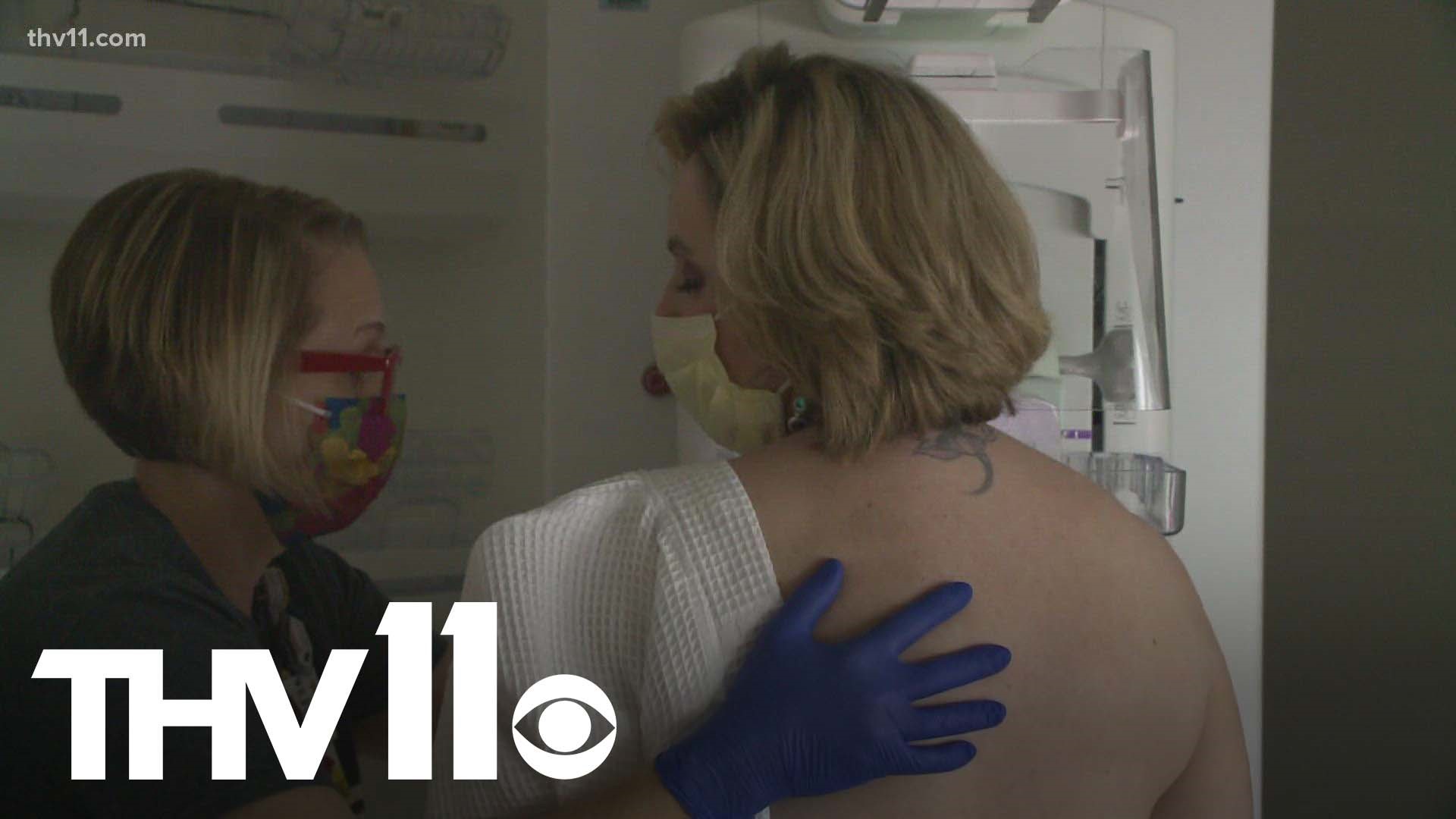LITTLE ROCK, Ark. — October is National Breast Cancer Awareness month. Routine screenings are important and we're sharing a critical piece of information about the process and where you can find it.
While reporting the weekly Buddy Check 11 series, it occurred to our anchor Karen Fuller that she was overdue for her own breast screening. That's what inspired her to make an appointment.
After a brief check in at the UAMS Winthrop P. Rockefeller Cancer Institute Breast Center, Karen followed the technician down the hall to a changing room where she put on a robe prior to the mammogram.
Falling behind on a breast screening is especially risky for women whose breast tissue is more dense than other women, which can make finding a suspicious lump, harder.
Dr. Gwendolyn Bryant-Smith is the Director of the UAMS Winthrop P. Rockefeller Cancer Institute Breast Center. She is also a radiologist and put together a group of images showing the four categories of breast density a woman may have.
“We divide the breast density into four categories of A, B, C, and D. A and B are fatty. C and D are dense. A is the most fatty. B is still fatty but not quite as fatty as A. C is dense, but it's not quite as dense as D, which is the most extreme density,” Dr. Bryant-Smith said.
Karen said that she learned years ago that she fell under category C. She was aware that her mother had the same density and while a woman’s breast density can be influenced by genetics, that’s only one factor.
Being in category C doesn’t mean she will develop cancer. It just means that her risk goes up.
“Not only does your risk for breast cancer increase as the breast density increases, but it also limits the mammogram and being able to find a subtle cancer because density is white, and cancers are white. So, you're trying to see a white cancer on a white background”, Dr. Bryant-Smith said.
Arkansas is one of only a dozen states without a breast density law. 38 others make it mandatory for a woman who has a mammogram to be informed of her breast density.
Dr. Bryant-Smith said that Arkansas has investigated such a law but has held off to wait for a nationwide FDA standard, which was expected to be released some time ago.
“Arkansas has visited a breast density law more than once and I have been involved in helping to review some of the preliminary drafts to be suggested as a bill," she said. "However, the last time that radiologists sort of rebuilt these bills, the FDA was going to come out with federal language about breast density. We've been waiting on it for years. It has not happened.”
Women who have a mammogram can and should ask their primary care provider to tell them what type of breast density they have.
It’s typically one of the first descriptions a radiologist notes on a mammogram report and any provider with the mammogram results should be able to answer such a question.
Even without a mammogram, women should also ask their provider to tell them about their risk for breast cancer. It’s something a provider can assess based on a woman’s health and family history.

